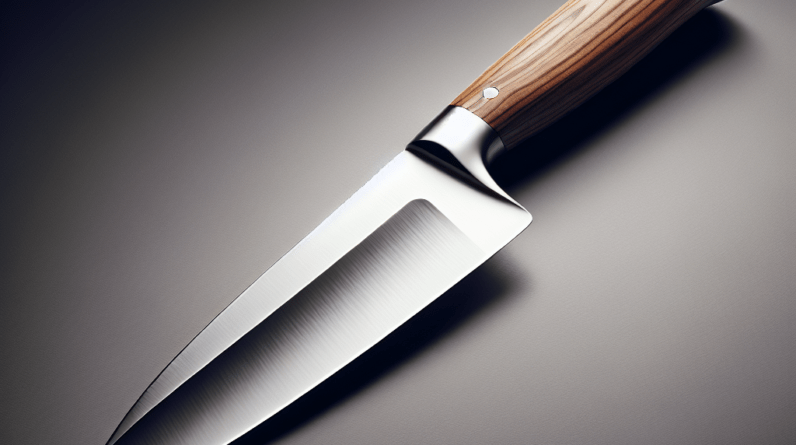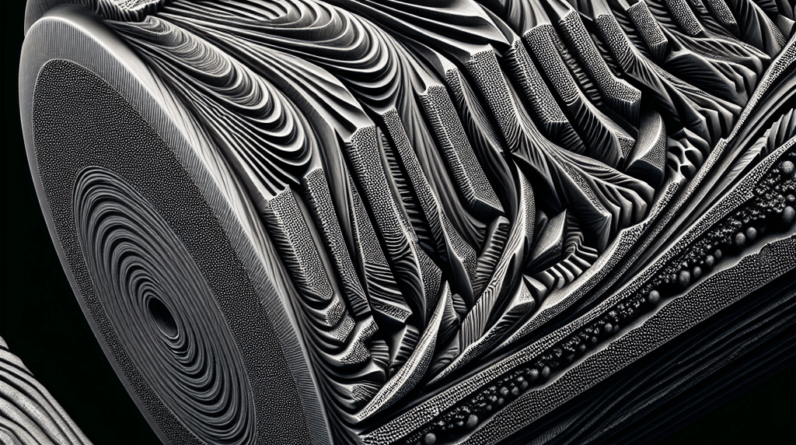In the world of kitchen knives, one term that often pops up is “full tang.” But what exactly does it mean, and why is it important? A full tang refers to the blade of a knife extending all the way through the handle, ensuring strength, balance, and durability. Without a doubt, this feature plays a critical role in determining the quality and performance of a kitchen knife. So, whether you’re a professional chef or an amateur cook, understanding the importance of a full tang in kitchen knives is key to finding the perfect tool for all your culinary adventures.
The Basics of Kitchen Knives
When it comes to preparing delicious meals in the kitchen, one of the most important tools a chef can have is a good set of kitchen knives. However, not all kitchen knives are created equal. There are various types of kitchen knives available, each with its own unique purpose and design. Understanding the basics of kitchen knives is essential for any aspiring chef or home cook.
Different Types of Kitchen Knives
Kitchen knives come in a wide variety of shapes and sizes, each designed for specific tasks. Some of the most common types of kitchen knives include:
-
Chef’s Knife: This versatile knife is the workhorse of the kitchen and is used for a wide range of tasks, such as chopping, slicing, and dicing.
-
Paring Knife: A small, nimble knife with a narrow blade that is ideal for intricate tasks such as peeling and trimming.
-
Santoku Knife: Originating from Japan, this knife is similar to a chef’s knife but has a shorter, wider blade. It is excellent for slicing, dicing, and mincing.
-
Bread Knife: With its serrated edge, this knife is designed to effortlessly slice through crusty bread without crushing it.
-
Utility Knife: A smaller version of a chef’s knife, the utility knife is perfect for tasks that require more precision and control, such as trimming and scoring.
-
Boning Knife: As the name suggests, this knife is used for removing bones from meat and filleting fish.
-
Carving Knife: With its long, thin blade, the carving knife is specifically designed for slicing through large roasts and poultry.
These are just a few examples of the many types of kitchen knives available. Each knife serves a specific purpose and having a diverse collection of knives can greatly enhance your culinary skills.
What is a Tang?
When discussing kitchen knives, you may often come across the term “tang”. The tang refers to the portion of the knife blade that extends into the handle. It is an essential component that determines the strength, durability, and balance of the knife.
What is a Full Tang?
A full tang knife is a type of knife where the tang extends the entire length of the handle. This means that the blade and the handle are made from a single piece of metal, providing additional strength and stability. Full tang knives are often considered to be of higher quality compared to knives with partial tangs.
Advantages of Full Tang Kitchen Knives
While it is possible to prepare meals with knives that do not have a full tang, there are numerous advantages to using full tang kitchen knives. Let’s explore some of these benefits.
Strength and Durability
One of the primary advantages of full tang kitchen knives is their strength and durability. The continuous extension of the blade into the handle ensures that the knife is less likely to break or snap during use. This makes full tang knives ideal for heavy-duty tasks, such as chopping through bones or tough vegetables. The added strength and durability of full tang knives also contribute to their longevity, allowing them to withstand constant use and frequent sharpening without losing their effectiveness.
Better Balance and Control
Another significant advantage of full tang kitchen knives is their superior balance and control. With a full tang, the weight of the blade is distributed more evenly, resulting in a knife that is easier to handle and maneuver. The enhanced balance and control of a full tang knife allow for precise and effortless cuts, reducing the risk of accidental slips or injuries. Whether you’re slicing through delicate ingredients or tackling more demanding tasks, the improved balance and control provided by a full tang knife can make all the difference in your cooking experience.
Improved Safety
Safety is always a top priority in the kitchen, and full tang knives excel in this aspect. The sturdy construction of a full tang knife offers a greater level of safety compared to knives with partial tangs. The risk of the blade separating from the handle, which can lead to accidents, is greatly minimized with a full tang design. By investing in a full tang kitchen knife, you can have peace of mind knowing that you’re using a reliable and safe tool in your cooking endeavors.
Enhanced Performance with Full Tang
Apart from the strength, durability, balance, and safety benefits, full tang kitchen knives also offer enhanced performance in various aspects of culinary preparation.
Efficient Cutting Power
With their solid construction and improved strength, full tang knives deliver efficient cutting power. The continuous metal from the blade to the handle ensures that the energy from your hand is efficiently transferred to the cutting edge. This results in cleaner and swifter cuts, reducing the effort required to slice through ingredients. The efficient cutting power of a full tang knife speeds up food preparation, allowing you to enjoy your meals faster and with greater precision.
Versatility in the Kitchen
Full tang kitchen knives are incredibly versatile tools that can handle a wide range of tasks. Their robust design enables them to tackle not only delicate slicing or trimming jobs but also heavier-duty tasks, like disjointing chicken or breaking down larger cuts of meat. Whether you’re an experienced chef or a home cook experimenting with new recipes, a full tang knife can meet all your culinary needs, making it a valuable addition to your kitchen arsenal.
Longevity and Investment
Investing in a full tang kitchen knife is a decision that will pay off in the long run. These knives are built to last, with their solid construction ensuring they can withstand the test of time and heavy use. By opting for a full tang knife, you are investing in a high-quality tool that will serve you well for years to come. While the initial cost may be slightly higher compared to knives with partial tangs, the longevity and performance of a full tang knife make it a worthwhile investment for any cooking enthusiast.
Choosing the Right Full Tang Kitchen Knife
When selecting a full tang kitchen knife, there are several factors to consider to ensure you find the perfect knife that matches your culinary needs.
Consider Your Culinary Needs
Before purchasing a full tang kitchen knife, it’s essential to consider your specific culinary needs. Reflect on the type of dishes you often prepare and the specific tasks you frequently encounter. Different knives excel in various areas, so understanding your requirements will help you determine which knife styles and sizes are most suitable for you. Whether you’re a meat lover, a sushi aficionado, or a vegetarian, choosing a knife that aligns with your cooking preferences will enhance your overall culinary experience.
Quality Materials
Another crucial aspect to consider when selecting a full tang kitchen knife is the quality of the materials used in its construction. High-quality knives are typically made from materials like stainless steel or carbon steel. Stainless steel knives offer excellent durability, corrosion resistance, and ease of maintenance. On the other hand, carbon steel knives often provide exceptional sharpness and edge retention. Understanding the qualities and benefits of different materials will help you make an informed decision and ensure you choose a knife that meets your expectations in terms of performance and longevity.
Handle Design and Comfort
The handle design and comfort play a significant role in the overall usability of a full tang kitchen knife. The handle should provide a comfortable grip and fit well in your hand, allowing for extended periods of use without causing discomfort or fatigue. There are various handle materials available, such as wood, plastic, and composite materials. Each has its own unique feel, so it’s important to choose a handle material that you find comfortable and easy to maintain.
Balancing the Budget
While it’s tempting to splurge on high-end kitchen knives, it’s also important to balance your budget. Full tang kitchen knives come in a wide range of prices, and it’s crucial to find a knife that offers the desired quality and performance within your budget constraints. Establishing a budget beforehand and researching different options will help you find a knife that strikes the right balance between quality and affordability.
Maintaining Full Tang Kitchen Knives
Once you’ve selected the perfect full tang kitchen knife, proper maintenance is essential to ensure its longevity and performance.
Proper Storage
Proper storage is crucial to prevent damage to the blade and ensure your full tang kitchen knife remains in optimal condition. It’s recommended to store knives in a knife block, on a magnetic strip, or in a knife sheath. These storage options protect the blade from dulling or chipping and reduce the risk of accidental cuts when reaching for your knife. Avoid storing knives in drawers or jumbled together, as this can lead to scratches or accidents.
Regular Cleaning and Maintenance
Regular cleaning and maintenance are essential for keeping your full tang kitchen knife in top shape. After each use, it’s important to clean the knife thoroughly with warm water and mild detergent, then dry it immediately to prevent any moisture-related issues. Avoid using abrasive materials or harsh chemicals that could damage the blade or handle. Additionally, periodically oiling the blade can help prevent corrosion and maintain its quality.
Sharpening Techniques
Over time, even the best full tang kitchen knife will require sharpening to maintain its sharpness and cutting performance. There are various sharpening techniques available, such as using honing rods, whetstones, or electric sharpeners. Understanding the proper technique for sharpening your full tang knife is crucial to avoid damaging the blade and achieve optimal results. If you’re uncertain about sharpening techniques, it’s advisable to seek professional assistance to ensure your knife is sharpened correctly.
In conclusion, understanding the importance of a full tang in kitchen knives is essential for any cooking enthusiast. Full tang kitchen knives offer numerous advantages, including increased strength, better balance and control, improved safety, enhanced cutting power, versatility, and longevity. When choosing a full tang knife, considering your culinary needs, the quality of materials, handle design and comfort, and your budget will help you find the perfect knife for your cooking adventures. Additionally, proper storage, regular cleaning and maintenance, as well as sharpening techniques, are essential for maintaining the performance and longevity of your full tang kitchen knives. By investing in a high-quality full tang kitchen knife and properly caring for it, you’ll be equipped with a reliable and efficient tool that will enhance your culinary experiences for years to come.









